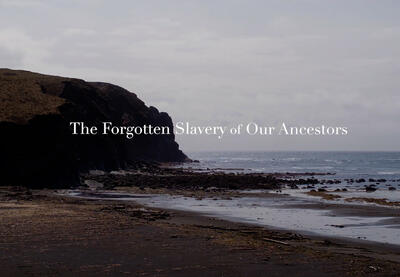In recent weeks, as politicians and others have stepped up attacks on the extraordinary 1619 Project, national attention has turned to the question of what history we owe to young people. At Teaching Tolerance, we believe that students deserve the truth.
Recognizing the ways that American enslavement and dispossession continue to shape our lives is a critical first step in working to address oppressive systems still in place. And students deserve an accurate reckoning of that legacy. As Hasan Kwame Jeffries, chair of our Teaching Hard History Advisory Board, wrote in his preface to that project, “Some say that slavery was our country’s original sin, but it is much more than that. Slavery is our country’s origin.”
We know that it takes courage to teach the hard history of American slavery. But recovering and sharing this history with future generations takes more than just the willingness to stand up to those who would bury it. It also requires us to review our own education, to find the spaces and gaps in our learning—and to figure out how to teach the history we ourselves weren’t taught.
That work is the foundation of Teaching Tolerance’s newest resource, The Forgotten Slavery of Our Ancestors. Made to share with students in grades six and up, the short film introduces the history of Indigenous enslavement on land that is now the United States and those working to recover that history.
The film introduces leading scholars and historians who sketch out the scope of this forgotten slavery. Historian Ned Blackhawk, for example, explains that Indigenous enslavement is “an American subject that both predated African American slavery and existed far beyond the contours of African servitude, particularly in the American South.” And Andrés Reséndez, author of The Other Slavery: The Uncovered Story of Indian Enslavement in America, notes that the enslavement of Indigenous people in the American West continued “throughout the 19th century.” In all, he estimates, somewhere between 2.5 and 5 million Indigenous people were enslaved in the Americas between the arrival of Columbus and the year 1900.
“I just think that ultimately,” says assistant producer Alice Qannik Glenn, “it’s about truth and truth-telling. And in order to move forward ... we should acknowledge the truth.” As an Iñupiaq, Glenn says, learning this history can be “healing”: “an acknowledgment of the truth that happened to us as native peoples in the past,” and an answer to today’s stereotypical—or absent—representations of Indigenous people and cultures.
“Before we started this whole project,” Glenn says, “We had a meeting, and we discussed ... why we want to do this.” The filmmakers gathered to share their own experiences learning Indigenous histories in school, what she describes as “those pilgrims and Indians plays.” That conversation, Glenn says, informed “why we’re doing what we’re doing here today.”
The connection between past and present isn’t just a motivation for the film—it’s a lesson the film holds up for viewers. By stressing the history of Indigenous enslavement and its impact in the present day, The Forgotten Slavery of Our Ancestors both introduces the material that we and our students need to fill the gaps in our understanding of this critical history and offers us methods for repairing that understanding. And throughout, the film makes the case for why that repair must take place.
It opens with a reflection from Wampanoag journalist, educator and activist Paula Peters. Her opening story, which frames out the film for viewers, makes the stakes of teaching this history clear.
Peters recalls her own experience learning the “Thanksgiving story” in grade school. She explains her response when the teacher told the class—almost as an afterthought—that the Indigenous people who helped the first colonists are “all dead.”
“I remember waving my hand wildly, like a little kid will do, and I said, ‘No. They’re not all dead. I’m here. I’m a Wampanoag. And I’m still here.’”
Director and editor Howdice Brown III, a filmmaker of Iñupiaq descent, stresses the importance of this framing.
“One thing that I always felt stood out to me and stayed in the film from the very beginning was the intro and making sure that there’s some sort of tie to the current times,” he explains. “I’ve done a number of historical projects, and that tends to be a thing, like, ‘Here’s what you’re teaching, and you’re here. ... You’re putting [this history] in a different place.
“But actually, it has a lot of relevancy to today, [to] people’s perspectives, or points of view or experiences as they navigate in the same world as everybody else.”
‘The Forgotten Slavery of Our Ancestors’ is available for streaming through Tolerance.org
It was edited and directed by Howdice Brown III, produced by Marie Acemah of See Stories and Assistant Producer Alice Qannik Glenn of Coffee and Quaq. The film is recommended for students in grades 6-12. Its runtime is 12 minutes.


0 COMMENTS